







IPCS |
International Programme on Chemical Safety |
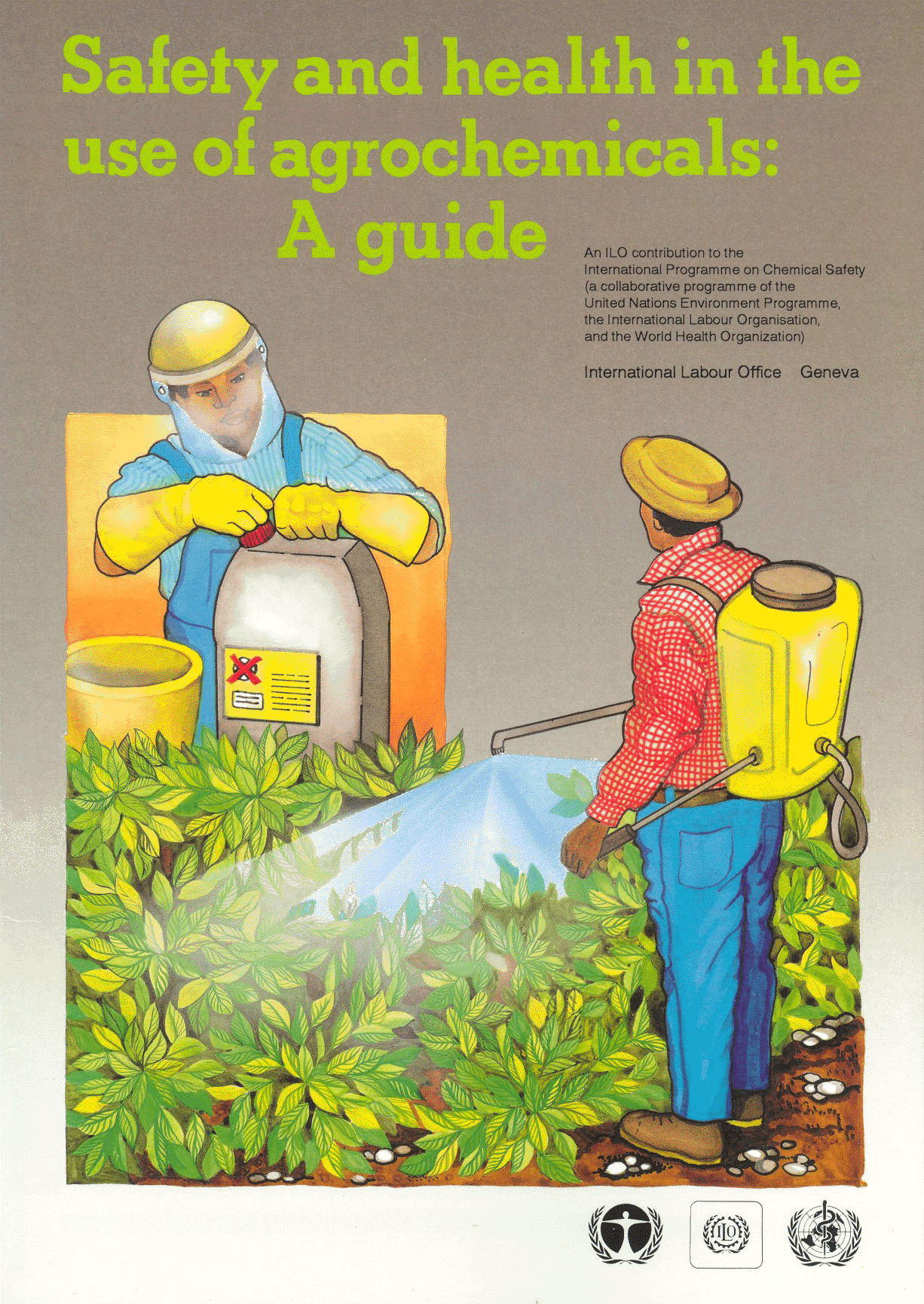 Safety
and Health in the Use of Agrochemicals
Safety
and Health in the Use of Agrochemicals
An ILO contribution to the
International Programme on Chemical Safety
(a collaborative programme of the United Nations Environment Programme the International
Labour Organisation and the World Health Organization)
3. Poisoning by agrochemicals, its management and emergency response
As described in section 2.2.1, agrochemicals are toxic, harmful, irritant or corrosive. They have to be handled and used with adequate care. Inhalation, ingestion or skin absorption should be avoided. Poisoning would result if they entered the body through any of those three routes of absorption. Symptoms of poisoning will depend on the quantities absorbed during a given period of time. The human body has the capacity to detoxify and eliminate small amounts of toxic substances absorbed. Elimination is through exhaled breath, urine or excreta.
When the amount of toxic substance absorbed exceeds what it can eliminate, the body will accumulate the substance. Some agrochemicals are extremely toxic and small amounts could result in acute poisoning; symptoms could appear in a few seconds or minutes. Others that may be less toxic could accumulate in the body to produce chronic poisoning. Some organs of the body such as the liver, kidney, brain or nervous system could get damaged over a period-of time. If the user is already suffering from other illnesses, exposure to agrochemicals could aggravate them. Therefore, agrochemicals should be used with extreme care at all times.
3.1. Types of poisoning and injury
The terms " acute " and " chronic " poisoning are used to describe the harmful effect of an agrochemical on the body. "Acute" means that the effect is either immediate or would appear within a day or two after exposure. Although the acute condition can be directly related to the agrochemical, the user may not be aware of this. The symptoms may appear as a general feeling of sickness, skin irritation or sudden and otherwise unexplained serious illness.
"Chronic" effects, on the other hand, take longer to emerge and are sometimes difficult to relate to agrochemicals or the use of one particular substance because different ones may have been used by the individual concerned. Also, when several agrochemicals accumulate in the body the chronic health effect may be caused by the cumulative effect of several chemicals. Medical practitioners and health personnel are generally aware of the chronic symptoms of agrochemical poisoning. It is therefore important to inform the doctor or the health worker of the agrochemicals one has worked with. Presenting the labels is the recommended way to consult the doctor.
Injuries usually result from chemical burns when strong acids or alkalis are used without adequate precautions. Further, injuries could result from self-vaccination while treating animals.
While necessary precautions should always be taken to prevent or minimise exposure to agrochemicals, agrochemical poisoning is not uncommon. Therefore, a basic knowledge about the acute effects of the different types of poisoning is of value to the user. Examples of some different groups of agrochemicals with common signs and symptoms are listed in Annex E.
3.2. Symptoms of poisoning and injury
Symptoms of acute poisoning from pesticides and veterinary products will often develop shortly after exposure. They will depend on the concentration of the product, the toxic substances in it and the amount absorbed; they may be immediate if inhaled or may take longer if absorbed through the skin. Early symptoms commonly include one or several of the following: dizziness, headache, incoordination, nausea, diarrhea, sweating, shaking and a feeling of weakness. The more toxic substances could also cause convulsions, irrational behaviour or unconsciousness.
The severity of irritant injury is proportional to the concentration of the substance and the sensitivity or condition of the tissue affected. Mild symptoms may be a stinging or scratching of the skin or eyes which, if untreated, will develop into skin blistering or peeling (figure 44). Some gases such as ammonia could cause irritation of the nose and throat.
Figure 44. Irritant injury
(blistering caused by contact
with toxic agrochemicals)
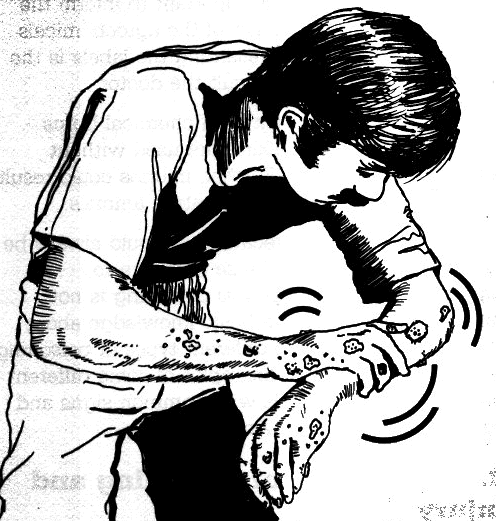
The relationship between cause and effect is generally self-evident but there are exceptions. Some pesticides are known as irritants, either an active ingredient or any other substance in the formulation may be the causative factor. Noticeable injury may be seen only after repeated exposure. Repeated exposure to substances in low concentration such as from handling grass or grain that have been recently sprayed may go unnoticed until skin blistering or peeling occurs.
In all cases of tissue damage it is important to avoid secondary infection of the affected tissue. Such infections are common in agriculture.
First aid is the use of available skills and knowledge to treat any condition of poisoning or injury until the casualty is in the care of a medical practitioner.' It has three main objectives:
Figure 45. Remove the casualty to
an
uncontaminated place
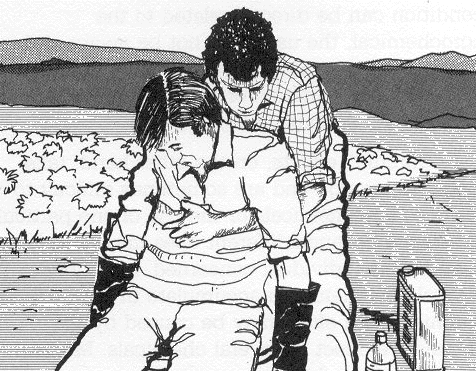
Figure 46. If agrochemicals enter
the eyes, wash
thoroughly with clean running water
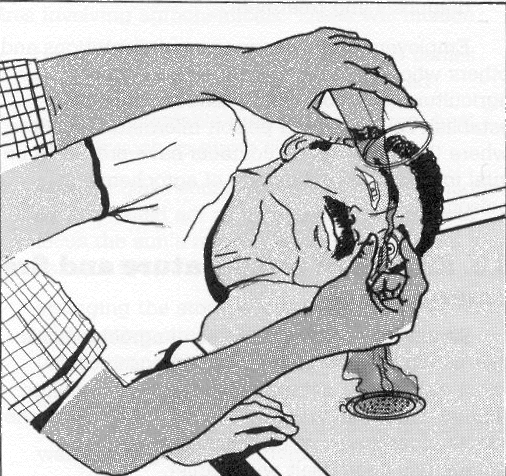
Figure 47. A casualty placed in the recovery position
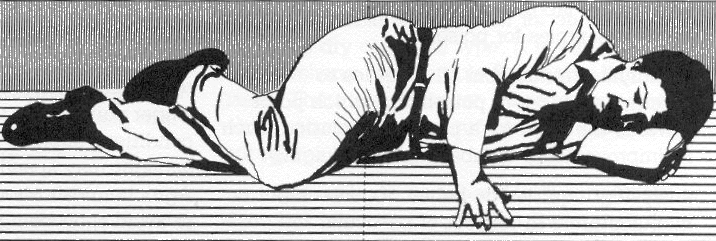
Poisoning by some chemicals, such as those containing dinitro compounds, may cause a rise in body temperature. In such cases it is important to keep the casualty lying flat and at absolute rest with unnecessary clothing loosened or removed. The face and body should be sponged freely and frequently with cool water; fanning may also be considered if it will help. Anyone poisoned in this way who is conscious and can swallow should drink as much clean water as possible to minimise dehydration.
As mentioned earlier, most injuries result from chemical bums. First aid should be given as quickly as possible:
by immersing the affected skin area in clean running water for at least ten minutes. While this is taking place, contaminated clothing should be removed, avoiding self-contamination. If the bum is serious, send for a doctor or ambulance, giving as much information as possible about the chemical involved;
The affected area may be gently covered with sterile dressing if readily available.
Cases of accidental self-vaccination of veterinary products should be handled by a doctor or health worker immediately. He or she should be told of the substance that caused the accident.
3.4. Role of poison information centres
A fair number of countries now have access to poison information centres which have been set up in response to the growing need for medical advice about agrochemical and pharmaceutical products.
The role of each centre is essentially to provide a support service to doctors, emergency services and other health workers who are called upon to treat cases of acute poisoning. The service operates by reference to an extensive computerised index of substances which describes their toxicity, diagnosis and treatment. Advice is almost always in response to a telephone call or other means of obtaining an urgent reply. In some countries centres are operated 24 hours a day throughout the year.
Centres may also provide further services such as
Employers such as managers of plantations and others who employ a number of workers in agriculture, and community leaders, should establish contacts with poison information centres, where they exist. Such contacts have proved to be vital in saving lives in cases of agrochemical poisoning.
3.5. Effects of temperature and fire emergencies
Situations involving the use of agrochemicals that would require emergency responses could result either from natural causes or human failure. Natural causes include the flooding of stores or the effects of temperature on agrochemicals. Safe storage has been dealt with earlier.
Overheating of agrochemicals could have serious consequences. Agrochemical users should take adequate steps to prevent such occurrences.
Fire is a more serious situation that the user has to deal with, or for which outside assistance must be sought. Again, while the first step is prevention, the user should know what to do in the case of a fire. This section deals with some basic principles of emergency response.
3.5.1. Effects of temperature on agrochemicals
Agrochemicals are stable at normal temperatures. Extremes of heat or cold may, however, cause deterioration of the container and its contents. This could result in the container leaking or bursting, and consequent spillages. If two or more containers begin to leak different agrochemicals simultaneously, these substances may react and produce gaseous vapours or even heat and fire. In addition, the contents of an apparently sound container may decompose owing to the effect of temperature so that they are no longer suitable for their original purpose. Climatic conditions such as high humidity and direct sunlight may speed up the rate of damage. Agrochemicals should be stored in a manner so as to avoid their being affected by fluctuations of temperature.
3.5.2. Fire prevention and fire-fighting
All possible measures should be taken to avoid fires involving agrochemicals. These will include:
In the event of fire:
3.5.2.1. Emission of toxic gases
The extent of toxic gas emission from an agrochemical fire is proportional to the number and type of the products involved. In practice, however, it is always best to assume that an agrochemical fire will produce toxic gases, which may be lethal from burning chemicals or plastic containers. There are also particular circumstances such as fires involving non-toxic fertilisers which give off toxic fumes when exposed to fire. Ammonium nitrate is one such example. Fire-fighters should take necessary precautions for fighting fires where toxic gases are released. They should position themselves on the windward side and use self-contained breathing apparatus.
3.5.2.2. Choice of fire-extinguishing agents
The type of extinguishing agent must be the most appropriate (table 1). It must be safe and not react dangerously with flammable materials or conduct electricity.
Table 1. Which fire-extinguishing agent to use
| Class of fire | Water | Carbon dioxide gas | Dry chemical powder | |
| A. | paper | yes | yes | |
| wood | yes | yes | ||
| textile | yes | yes | ||
| fabric | yes | yes | ||
| B | flammable liquids | yes | yes | |
| C | flammable gases | yes | yes | |
| electrical hazards | yes | yes | ||
Most fires develop slowly. A bucket of sand or a portable fire extinguisher may be all that is initially needed. Larger fires should be fought by professional fire-fighters.
The agrochemical user should be prepared by having portable extinguishers at the storage site and being trained to use them. Fire extinguishers should be of an adequate size and positioned where they will be readily available.
Table 2 lists the different types of fire extinguishing agents and their uses. The most suitable portable extinguisher for an agrochemical fire is the dry chemical type. It is effective against fires involving combustible flammable liquids and gases. There are, however, other extinguishers which, according to circumstances, may also be suitable.
Table 2. Action on fire-extinguishing agents

Fighting large agrochemical fires with water alone has been successful, but there are disadvantages. The first is that water may wash out poisonous material to contaminate the wider environment. Building or the construction of a small earth wall around the store will help to prevent this by containing the polluted water. This should be an essential feature of all larger stores. The second disadvantage concerns those agrochemicals which react with water to produce poisonous gases. However, most agrochemicals are compatible with water; the exceptions are some cyanide compounds and phosphide. These substances, which are extremely toxic gases used as fumigants, release hydrogen cyanide gas and phosphine respectively in contact with water.
1. Have you, or anyone in the neighbourhood, fallen ill from working with agrochemicals?
What were the symptoms?
What was the treatment?
What were the consequences?
| Point to remember Remember always to take the containers of agrochemicals used, along with their labels, if a case of acute poisoning is taken to a hospital, doctor or other health worker. Take extreme precautions in transporting the containers. The doctor or other health worker consulted may then read the label and give prompt treatment. |
2. Try to remember and list the products that caused these illnesses.
3. Could you list the products to which you would attribute any cases of illness that may have occurred after several years of exposure?
4. Record the name and address of the trained first-aider nearest to your home.
How often do you consult the first-aider?
List the instructions you have received from the first-aider.
What are the differences, if any, in giving first aid to a person who is: (a) poisoned and unconscious; (b) poisoned but conscious; or (c) burnt with agrochemicals?
5. Is there a poison information centre in your country? If yes, (a) record -the name and address; (b) list ways in which it could help you; (c) draft a telegram for advice assuming that a person in your locality was poisoned with a new pesticide, and the label does not give information about any antidote. Aside from such a centre, do you know anywhere you can seek advice about poisoning?
6. Have you ever seen or heard about a fire in an agrochemical store in your locality or any other locality?
| Point to remember: Fire extinguishers are very important and should be readily available. You should always be trained on how and when to use the various types of extinguisher |